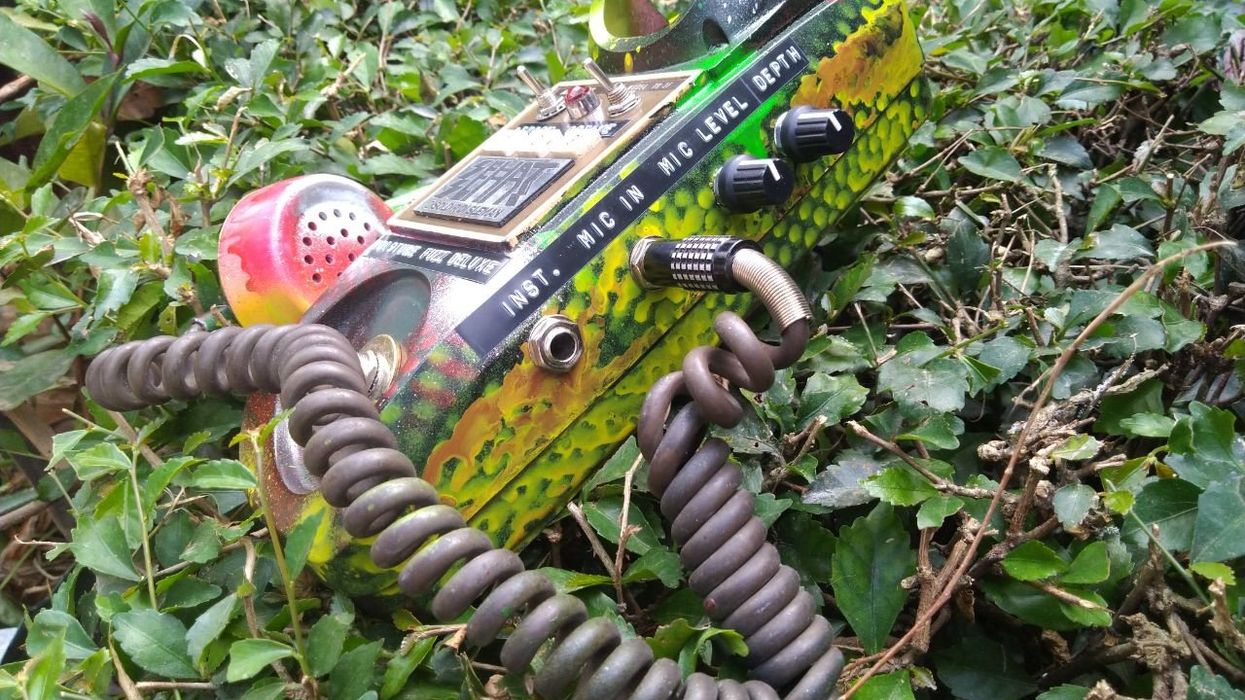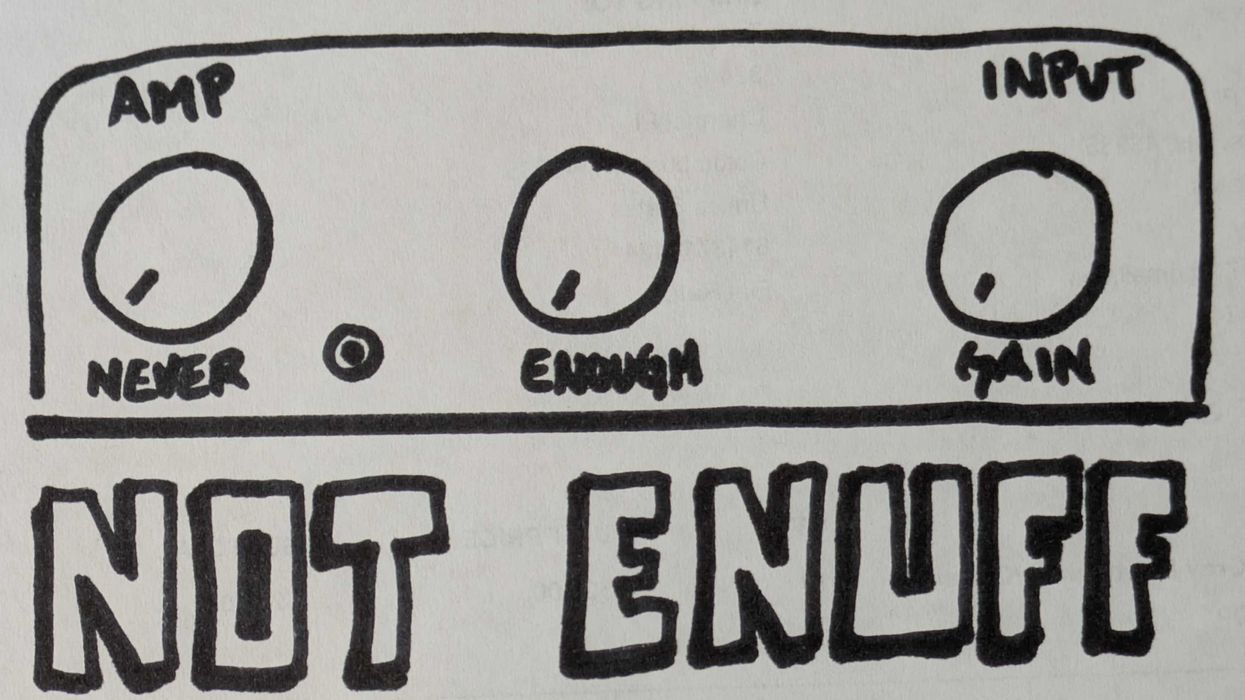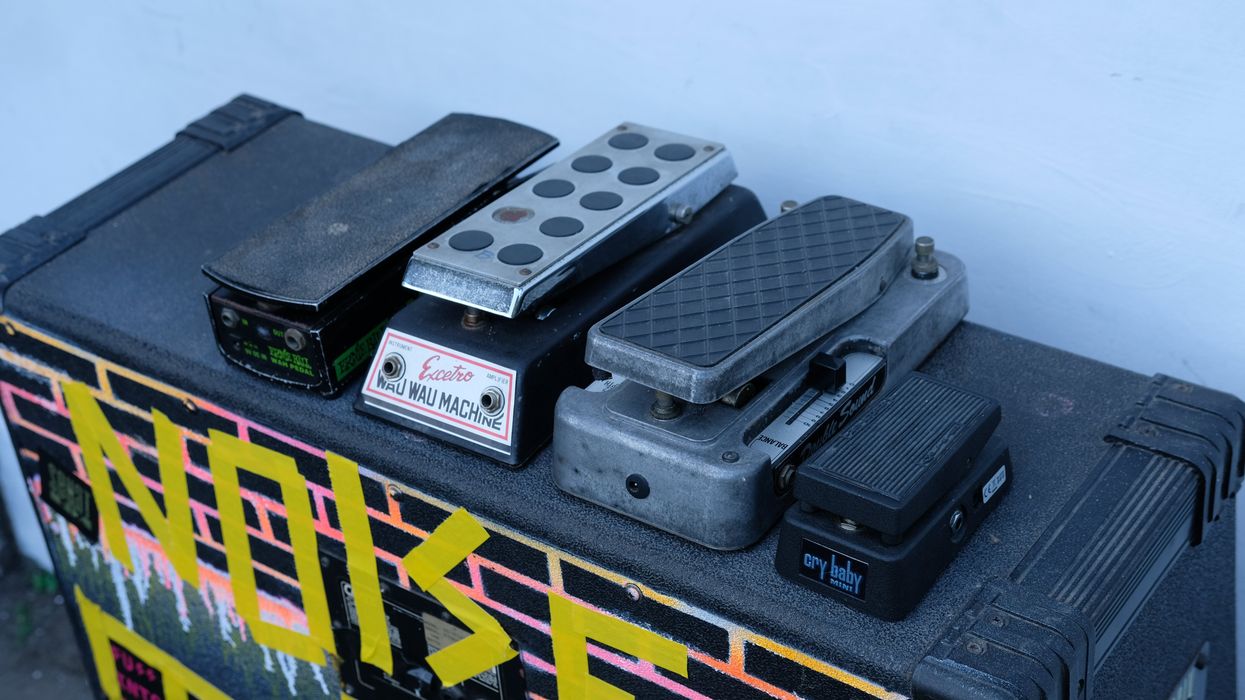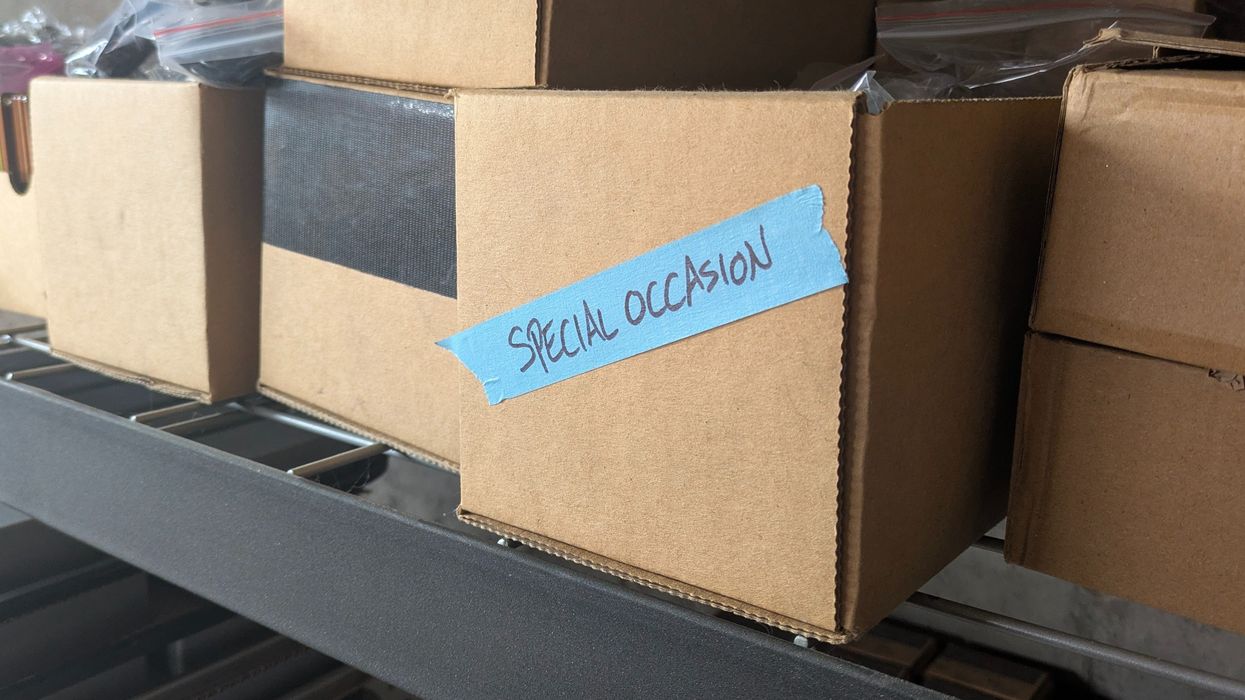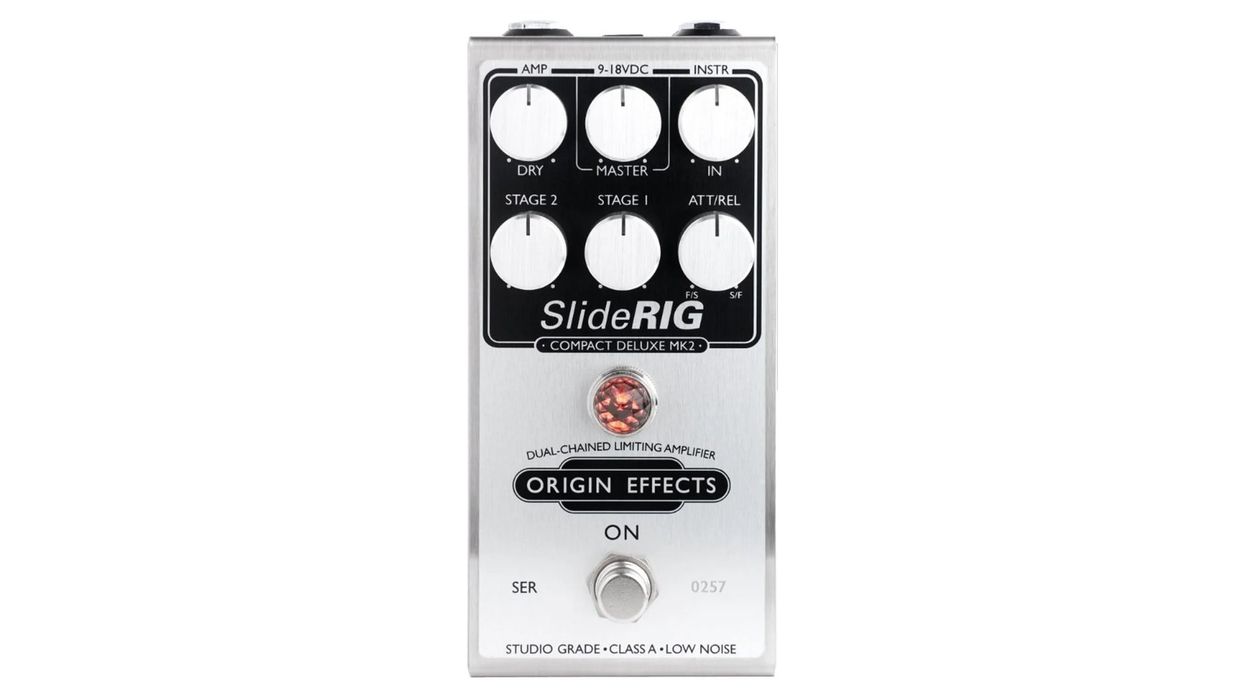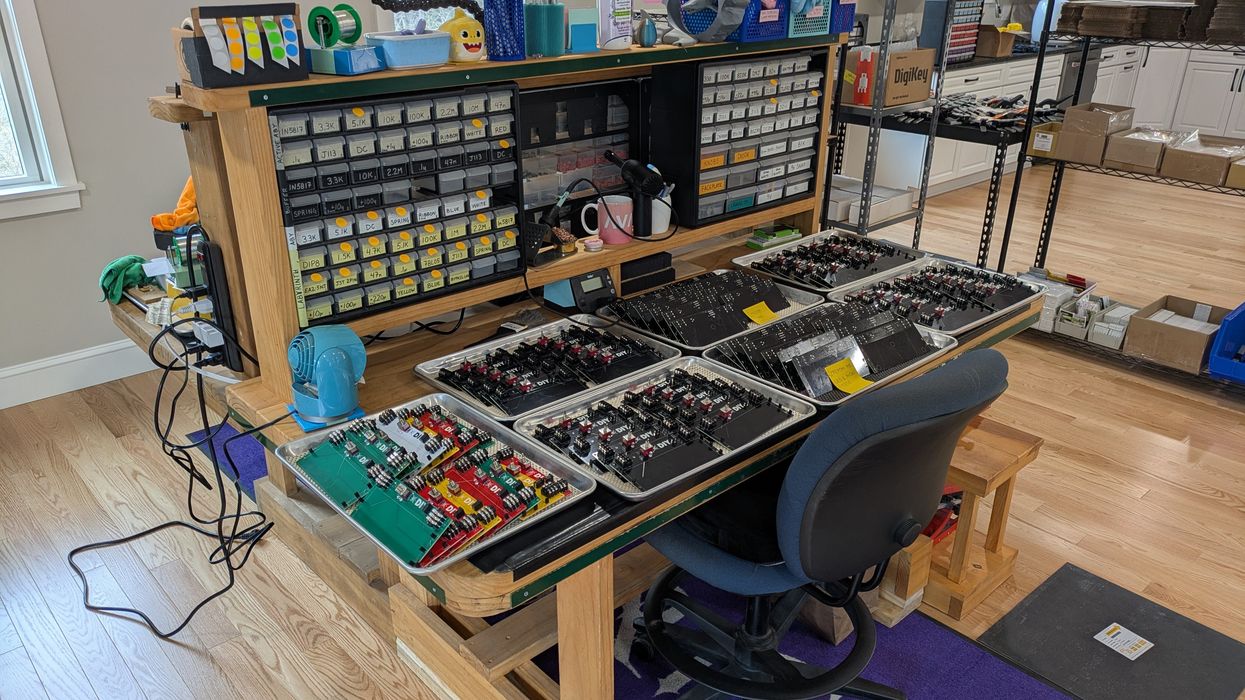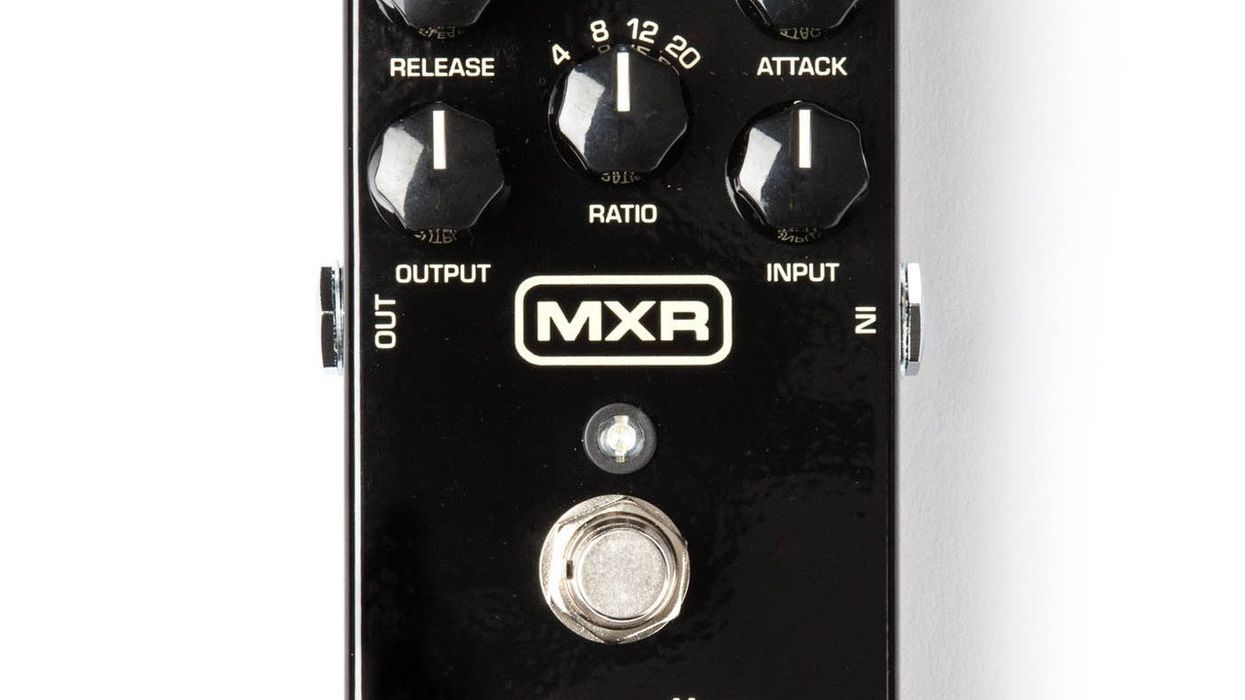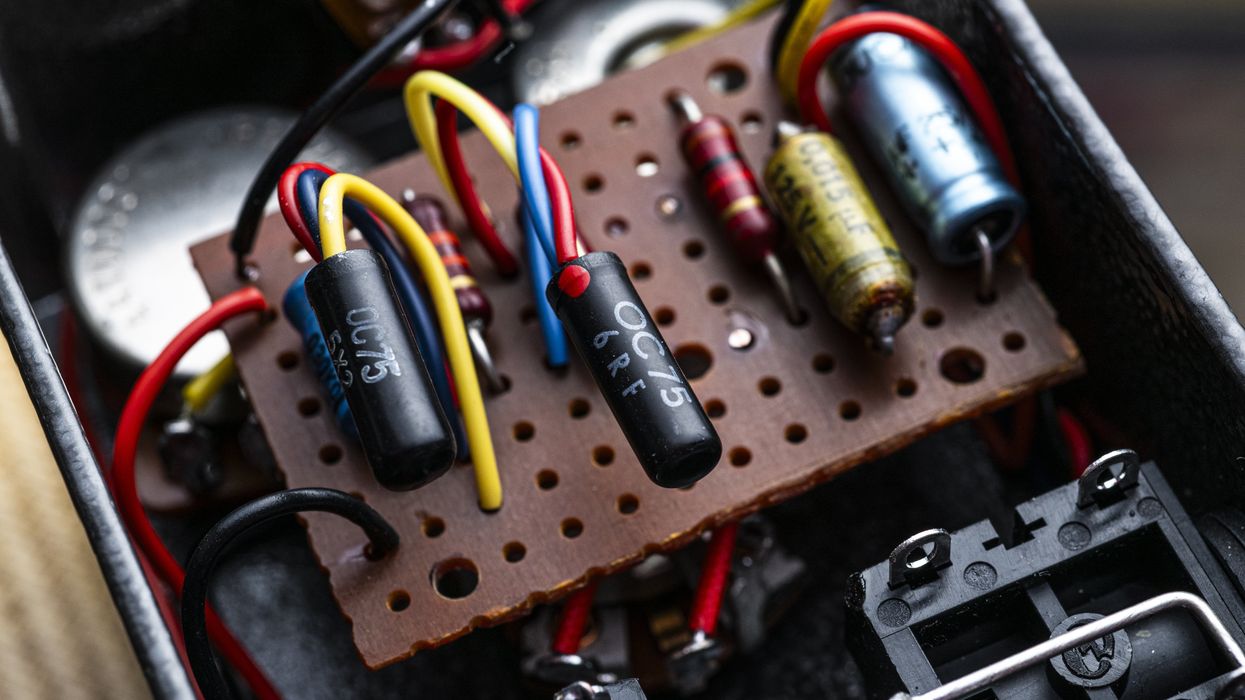Meet the Telepunk Fuzz. This is one of Sehat Effectors’ best-selling devices. Let that sink in, because it’s unconventional—to put it lightly—and very cool. Here’s how it happened.
Back in 2017, I met my buddy Keket Soldir. We have the same interests in making disturbing pedals and going to flea markets to hunt for cheap treasures. We have very little money, so we’re looking for things that we can use for pedal enclosures. We’ve found lots of medical tools, military tools, old office tools, and one day, I found a wall intercom phone. I told Keket, “Let’s make a pedal with this!” and he laughed at me. “That’s not going to happen,” he said. “The shape is weird and there is limited space inside. I think we’re not going to make it unless we modify the shape.”
I brought it home anyway, opened it up, cleaned the inside, and put a simple 1-knob overdrive circuit within. It worked! But that was just the beginning.
The phone itself is a ’70s/’80s Japanese wall intercom, which was very popular in many offices in Indonesia back then. Discarded variations are cheap and easy to find. There are many different brands: Aiphone, Matsushita (named after the founder of Panasonic), National, etc. But the Aiphone was the most popular and is still easy to find, probably because it was the cheapest brand back then. There are also different models and shapes, depending on the year of production. The ’70s to early ’80s models usually come with a carbon microphone with a simple germanium preamp and amplifier driver, and the newer models usually come with a more modern electret microphone with an improved preamp circuit in it. Actually, almost all Japanese electronics with audio drivers from that era come with the same boards. Perhaps there was one major factory in Japan which produced and distributed that board for various brands, just like Matsumoku in Japan’s 1960s and early ’70s guitar-building history.
“Let’s make an effect pedal from this phone without losing its identity as a telephone.”
The enclosure itself is made of hard plastic (often called “atom plastic” in Indonesia) with sharp edges and a metal cover plate. We also salvage tons of vintage parts from these phones, such as germanium transistors, Matsushita film caps, and sometimes we pull lots of white- and blue-striped diodes (MA150, MA161, and 1S1588), which were also used in early Tube Screamers and other vintage ’70s/’80s Japan-made effects.
The Telepunk Fuzz idea itself is: “Let’s make an effect pedal from this phone without losing its identity as a telephone.” For the first example, we already had an oscillation fuzz called the Moisture Fuzz, and we just put that circuit into the telephone enclosure. But when we decided to keep making more, we added an Atari punk console for weird modulation. Today, there are three circuits in our Telepunk Fuzz: an oscillation fuzz, the Atari punk console (which is a lo-fi synth circuit), and the microphone preamp. Also, if you unplug the guitar, it’ll work as a standalone noise box, thanks to the oscillator’s and punk console’s ability to generate ridiculous amounts of noise on their own.
The device’s mic and instrument inputs—honestly, you can plug anything into either one—are separate from each other. But the mic input has its own preamp and volume control, which then stacks into the fuzz circuit. The instrument input feeds the punk console and can be mixed into the overall output signal to create a harmonic tremolo texture.
So, that’s the story behind our Telepunk Fuzz, although we think there are many possibilities for more telephone-based effects units in the future. Luckily, there are also still a lot of those telephones available for very little! And who knows what other home we might find for a circuit at a flea market or pawnshop? We’re also thinking about a more pedalboard-friendly version, so the device can enter the larger stompbox universe. Who knows where these noisy Fuzzes from a time long ago in a galaxy far away—the pre-digital zone—will end up on their sonic journey?
